SUMMARY
This is AI generated summarization, which may have errors. For context, always refer to the full article.
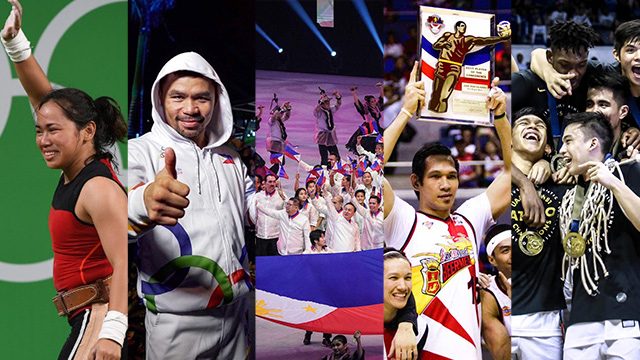
MANILA, Philippines – As another decade ends, let’s take a look back at the most memorable events that unfolded in Philippine sports.
Hidilyn makes history
When Zamboanga City native Hidilyn Diaz lifted a barbell weighing 112kg in Rio De Janeiro, Brazil, she also carried the hopes and dreams of Filipinos who patiently waited for the time when one of their own would win an Olympic medal.
She delivered. And because of that, she became immortal in Philippine sports.
After a tough showing in the snatch event, Diaz successfully lifted 111kg and 112kg in the clean and jerk of the 53kg division in women’s weightlifting of the 2016 Olympics in Brazil. The favored Li Yajun of China then failed to lift any of her attempts, which paved the way for Diaz, who tallied a total lift of 200kg, to win the silver medal.
It was a record-setting feat as Diaz became the Philippines’ first female athlete to win an Olympic medal, the first Filipino to land on the Olympic podium in 20 years, and the country’s first medalist outside boxing since 1936.
The result was also vindication for Diaz, who failed to medal in two previous Olympic stints. Rather than succumbing to prior defeats, the now 28-year-old sensation looked for ways to improve, leading to an incredible moment to last a lifetime.
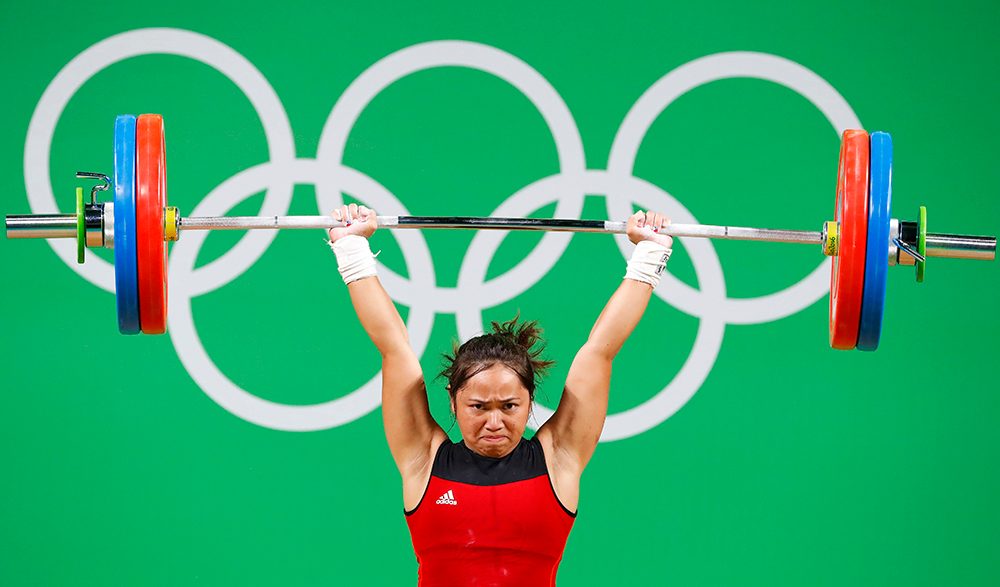
Korean curse ends
This one’s special.
There’s always that one opponent– the one which just can’t seem to be defeated. Since the start of the millennium, South Korea was the Philippines’ unsolvable puzzle in international basketball.
The two always had fierce head-to-head matches. Most of the time, the South Koreans escaped with narrow victories. The heartbreaking buzzer-beater of 2002 will always be haunting.
When the Philippines hosted the 2013 FIBA Asia Championships, a gold medal was the goal for Chot Reyes and the national team. Their aim was to catapult the Philippines back to continental prominence.
On a larger scale of what was at stake, a ticket to the 2014 FIBA World Cup in Spain was also on the line. The top 3 would earn their tickets. Gilas faced Korea in the semifinal. A victory would guarantee it. The Philippines hadn’t been in the World Cup since 1973.
There was a confidence to Jimmy Alapag, even as Gilas walked to their locker room for halftime trailing South Korea by 3. The Philippine team was playing well – getting quality shots on offense and contesting everything on defense – even with the loss of its naturalized big man, Marcus Douthit, to injury.
Many in the crowd wore white and cheered in unison. Japeth Aguilar threw down a thundering dunk to end the 3rd period with the Philippines ahead by 9, a turnaround sparked by a younger Jayson Castro.
Aguilar’s dunk was one of those rim-rattlers where he hung on to the rim for an extra second to let the fans marvel at his athleticism, and, at that moment, Gilas’ dominant display. The energy of their fans – the sixth man – aided them.
South Korea threatened to break their hearts again late, but Alapag would have none of it. He’s hit many big shots in his career. None was bigger than the final dagger.
Moments later, with an emotional celebration imminent, Marc Pingris scored on an offensive board. He hustled for it, like he did every possession after Douthit went down. Puso.
As time ran down, Reyes looked emotional with his head buried beneath his hands. Around him, the entire Philippine team – the players, the coaches, and every human in the crowd – embraced and cried in celebration after stunning long-time tormentor Korea, 86-79. This was for the country.
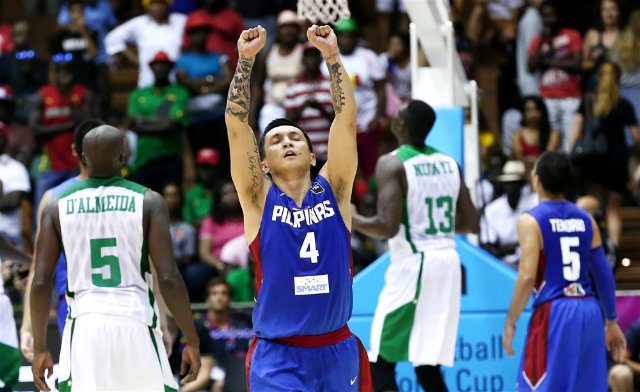
Manny turns back the clock
Manny Pacquiao ended another outstanding decade – which included his highly publicized fight against Floyd Mayweather Jr in 2015 – with a record of 62-7-2 to become the oldest welterweight boxing champion at age 40.
Pacquiao lost to the unbeaten Mayweather, now retired, in their 2015 “Fight of the Century” via a unanimous points decision in one of the richest fights in boxing history.
After bouncing back in 2016 with wins over Timothy Bradley and Jessie Vargas, Pacquiao lost a controversial bout against Australian Jeff Horn the following year in Brisbane.
But there’s still no stopping the Filipino legend as he returned to the boxing ring in July 2018 when he battled Lucas Matthysse in Kuala Lumpur, Malaysia.
There were reports beforehand that Pacquiao would participate in the undercard of the Crawford-Horn match in Las Vegas, but ultimately, the greatest Filipino boxer of all time decided he wanted to headline his own card rather than playing second fiddle to a main event featuring a man he felt he defeated the year prior.
Motivated, Pacquiao turned back the hands of time by scoring early knockout blows against Matthysse, who came in with a 39-4-0-1 record. After dropping his opponent to the mat 3 times, Pacquiao was officially named the victor via TKO in round 7 after official Kenny Bayless stopped the fight. It was a vintage display of Pacquiao’s abilities.
It was also Pacman’s first knockout victory in 8 years. Less than a month after their duel, Matthysse retired from the sport.
The triumph awarded the then 39-year-old the WBA welterweight title, and paved the way for two more victories against Adrien Broner and Keith Thurman in 2019.
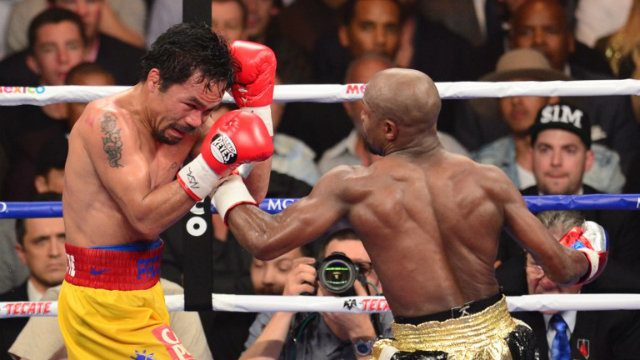
Five-time. Can you dig that?
There are championship teams, then there are dynasties. The best champions who have played the sport of basketball have constantly preached that defending a title is always more difficult than winning the first one, especially when you become the hunted instead of the hunter.
By the time the 2012 UAAP men’s basketball season came to a close, Norman Black’s Ateneo Blue Eagles had successfully defended their throne 4 straight times and became the first team in the UAAP Final Four era to win 5 straight titles.
The standout athlete who was lined up for each of those championships, Nico Salva, was named the Finals MVP of Season 75, after the Blue Eagles fended off UST to sweep their series. Ateneo prevented a Tigers comeback late in Game 2 thanks to the clutch heroics of young “Phenom” Kiefer Ravena, who finished with 22 points, took ownership of the late-game spotlight with a smooth jumper, and won his second ring in as many years.
Ateneo’s five-peat dynasty started under the leadership of Chris Tiu, who experienced the Blue Eagles’ heartbreaking defeat to UST in the finals of 2006 and a devastating Final Four loss to a La Salle team coming off a year-long suspension a season later.
Powered by Rabeh Al-Hussaini’s MVP-level play, Ateneo won back-to-back titles in 2008 against the Green Archers and in 2009 versus the Red Warriors.
Following the departure of Tiu and Al-Hussaini, the Eagles leaned on a young but determined team to win a third straight chip against FEU in 2010, then won two more leaning on the shoulders of Salva, a walking mismatch; Ravena, Philippine hoops’ next great star; and Greg Slaughter, a mammoth 7-footer who was destructive in the paint.
At the time, the Blue Eagles’ fifth straight title was considered by their rivals as the beginning of their end. Season 75 was Black’s last year in the UAAP before heading to the PBA, and the conclusion of the university’s partnership with patron Manny V. Pangilinan, who eventually returned. True enough, Ateneo failed to defend its title in 2013, and wouldn’t win another championship until 4 years later.
Nevertheless, what Black and his squads accomplished together is still one of the most remarkable achievements by a UAAP basketball team.
By the end of the decade, Ateneo seemed to prove that it’s restarting another dynasty as it closed 2019 with a three-peat crown behind the leadership of three-time Finals MVP Thirdy Ravena.
Grandest of accomplishments
The greatest accomplishment for a PBA team is to win a Grand Slam.
In the 2014 PBA season, Tim Cone’s San Mig Coffee Mixers won the All-Filipino Conference and Commissioner’s Cup by defeating Rain or Shine and Talk ‘N Text in the finals, 4-2 and 3-1, respectively. To win the Grand Slam – which would be the second in Cone’s nearly flawless resume – those two proud teams stood in the way of his squad, again, in the final two rounds of the Governors’ Cup playoffs.
Despite finishing the elimination round with only a 5-4 record, SMC eliminated top-seeded TNT in a Game 5 which was essential to determine their semifinal series. In the next round, a motivated Rain or Shine team led by the young AZ Reid, an explosive Paul Lee, and champion coach Yeng Guiao stood in their way of history, coming off a tough 3-2 conquest of the Alaska Aces.
The third and final title of the PBA’s 39th season required a do-or-die Game 5 to determine a victor. Rain or Shine rallied from a 16-point deficit in the second half and was only within 3 points in the dying seconds of the unforgettable battle inside The Big Dome. In need of just one stop to cement their status in PBA lore, the Coffee Mixers contested multiple attempts by Elasto Painters like Lee and Jeff Chan to tie the contest.
Ultimately, a misfire by Reid from the top of the key prompted the sound of the final buzzer inside the exuberant arena, leading to a celebration worthy of the history books.
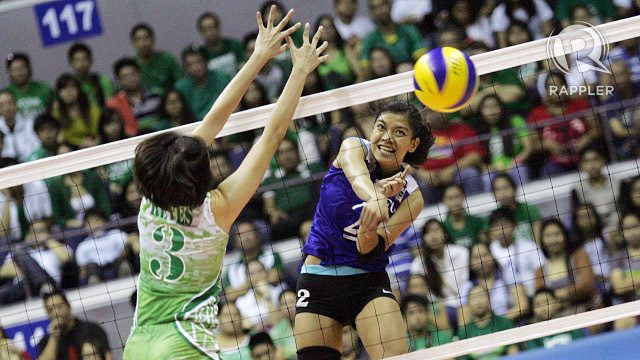
‘Heartstrong’ takes centerstage
The rise of volleyball’s popularity in the Philippines is one of the past decade’s most noteworthy tales from the local sports scene. That wouldn’t have been a reality were it not for the individual brilliance of Alyssa Valdez – now a Philippine sports icon – and the conquests of the Ateneo Lady Eagles, led by their Thai head coach, Tai Bundit.
After the Ateneo Lady Eagles lost the “Fab Five” at the end of UAAP Season 75, few expected the team to remain a title contender.
But led by Valdez’s league-MVP performance, the “heartstrong” mentality instilled by Bundit, and players who fulfilled their roles beyond expectations, Ateneo set a third straight finals appearance in 2014 against the powerhouse of collegiate volleyball, La Salle.
The Lady Eagles accomplished this by knocking out Adamson in a stepladder Final Four bout, then by winning two consecutive do-or-die games against the NU Lady Bulldogs.
After going undefeated in the elimination round, the Lady Spikers from Taft were shockingly defeated by Ateneo in Game 1 of the finals. Led by Aby Maraño, DLSU tied the series in Game 2, and by virtue of their thrice-to-beat advantage, needed only one more win to secure a fourth consecutive title.
The series was a contrast between two programs with different personalities: Ateneo focused on staying calm and meditated during pressure-packed moments, while La Salle wasn’t shy about its boisterous confidence and swag. With their backs against the wall, the Lady Eagles went up 2-1 after winning Game 3, proving they were ready to take the crown.
True enough, Ateneo swept La Salle in 3 sets in Game 4 to secure their first women’s volleyball title in dominant fashion.
With more than 20,000 witnessing live and thousands more watching from their homes, the Lady Eagles’ victory was the dawn of a new era – not just for Ateneo and the UAAP, but also for Philippine volleyball.
The Barangay comes back
There is no fan base in Philippine sports which admires its favorite team like a religion more than the Barangay Ginebra faithful. That’s why before the 2016 PBA Governors’ Cup, the franchise’s eight-year championship drought was the stuff of nightmares for a group of supporters who have loyally pledged their allegiance to the team since the days of PBA great Sonny Jaworski.
With one shot, in front of a hungry crowd who ignited their cellular flashlights, inside an arena that’s seen its share of historic moments, and in a series which tested the internal fortitude of both worthy teams, that all changed.
Right before the game clock expired, Ginebra import Justin Brownlee nailed a legendary three-pointer from the top of the key against the outstretched arms of Meralco import Allen Durham, to secure Ginebra the title it had coveted for nearly a decade.
Arguably the greatest shot in PBA history, Brownlee’s buzzer-beater cemented his name in the PBA’s list of most unforgettable players and won coach Tim Cone his 19th of a record 21 championships.
The Governors’ Cup title ended a title dry spell for Ginebra’s OG duo Mark Caguioa and JJ Helterbrand, who were the franchise’s golden boys in the prior decade. LA Tenorio, who was reunited with Cone, won Finals MVP, while Japeth Aguilar established himself as a championship-caliber player following a wave of criticism in the early stages of his now fine career.
The most lasting images, however, were of the ecstatic Ginebra fans, who amidst a sea of confetti, hugs, and tears, finally made the return to a place they had been away from far too long.
Nowhere to go but the finals
In 2014, the University of the Philippines won one game in the UAAP elimination round and celebrated by having a bonfire at the Diliman campus’ famous Sunken Garden. Four years later, the remarkable turnaround of State U’s men’s basketball program came full circle when the Fighting Maroons beat Adamson – the same school they defeated to warrant sending sparks up the heavens – as a lower seed to advance to the finals.
Despite losing to the Soaring Falcons twice in Season 81, UP, the underdog, looked confident entering Game 1, which they won thanks to the late heroics of league MVP Bright Akhuetie.
An unforgettable overtime thriller followed in Game 2, which ended following the clutch jumper of King Maroon Paul Desiderio over “UP killer” Sean Manganti and a misfire by Falcon rookie Jerom Lastimosa.
The victory awarded UP its first appearance in the UAAP men’s finals since 1986, the same year the program won its last championship. The ensuing celebration from the UP crowd was one of the most emotional scenes in collegiate sports, Iskos and Iskas cheering and crying as their team made history.
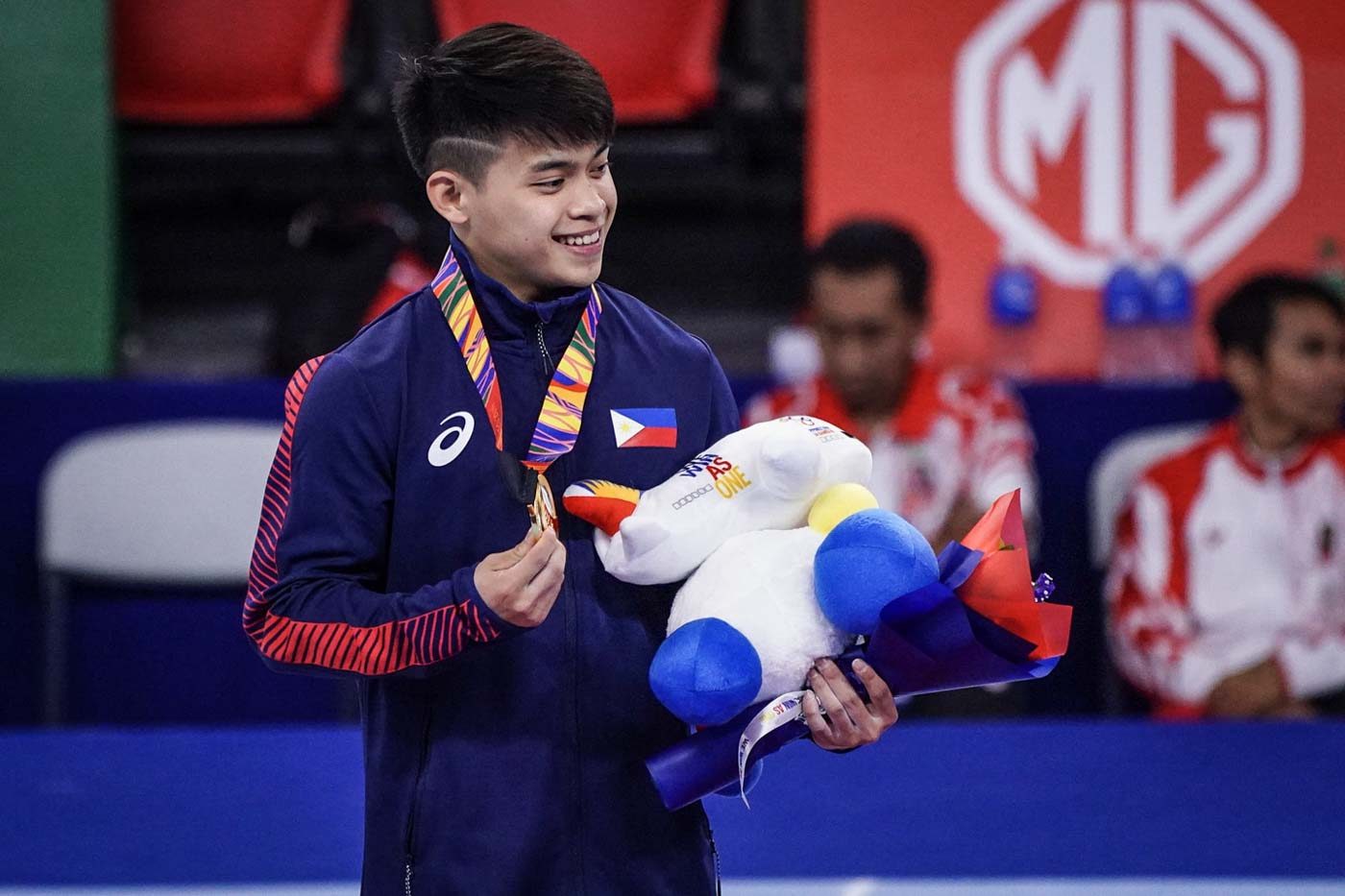
Philippine athletes are golden
The 2019 Southeast Asian Games hosted by the Philippines made a lot of news reports – both good and bad – and became a trending discussion on social media for almost a month.
Ultimately, the most celebratory sentiments from the biennial competition were the talent and sportsmanship of the Filipino athletes – from Olympic weightlifter HIdilyn Diaz to world gymnastics champion Carlos Yulo to new surfing sensation Roger Casogay.
After a 14-year absence at the top, the Philippines reigned supreme again as the overall champion with 387 total medals – 149 gold, 117 silver, and 121 bronze.
Reports of lack in preparation and miscalculations in logistics threatened to derail what was supposed to be a proud moment for the country, but thankfully, the athletes who represented the Philippine colors admirably made the 2019 SEA Games a spectacle to remember.
Down 0-3? Not a problem
The latter half of the 2010s in the PBA belonged to the San Miguel Beermen, the league’s most successful franchise in its more than 4 decades’ worth of battles on the hardwood. The Beermen boast many championships, but their conquest of the All-Filipino conference in early 2016 remains sweeter than the rest.
Down 0-3 and playing without league MVP June Mar Fajardo, who pundits consider the GOAT (Greatest of All Time) of Philippine hoops, the Beermen rallied against Alaska’s lead late in the 4th quarter of Game 4 to stay alive.
Fajardo returned from his knee injury in Game 5 to bolster his championship-experienced teammates, and together, the motivated group won the next two contests to force a winner-take-all.
With momentum and Finals MVP Chris Ross on its side, San Miguel established control early in Game 7 and kept Alex Compton’s Aces at bay when his troops rallied in the 4h period.
Ross put the finishing touches on a comeback for the ages with a pair of layups and a dagger trey as San Miguel became the first team in PBA history to rally from a 0-3 series deficit in the finals.
Aldin Ayo magic
A player turned coach, Aldin Ayo thrived with the Letran Knights in the NCAA men’s basketball tournament in 2015.
Leaning on Ayo’s press-heavy “Mayhem” system, the undersized Knights advanced to the finals where they squared off against a history-seeking San Beda Red Lions team which was gunning for a sixth consecutive title.
Both clubs took turns winning the first two games of the series before setting up a nail-biting conclusion to Game 3, which also needed an extra 5 minutes to determine a champion.
After blowing an eight-point lead with under two minutes to go in regulation, the Knights eventually secured triumph thanks to clutch free throws by their veterans, and a dire lane violation charged to the defending champions.
The victory ended a 10-year championship drought for Letran, which also won its 17th overall NCAA men’s basketball title.
Ayo continued to weave his magic in the UAAP as he also steered the La Salle Green Archers to the championship in 2016 to become the first collegiate coach to lead two teams in two different leagues to the championship. By the end of the decade, Ayo remained on top of his game as he mentored the University of Santo Tomas Growling Tigers to the finals in 2019.
La Salle outlasts UST in an epic finale
Following Ateneo’s dominant five-year reign in UAAP men’s basketball, the door was open for a new ruler to reign over the collegiate basketball league in 2013.
After surviving a shoulder injury to its best player, Jeric Teng, in the elimination round, the UST Growling Tigers went on a late elims run and dethroned the defending champions in a knockout match to earn the last ticket to the UAAP Season 76 Final Four.
Despite facing a twice-to-beat disadvantage, the motivated Growling Tigers defeated top-seeded NU to make the finals, where they faced the up-and-coming DLSU Green Archers, who were led by Jeric’s little brother and the UAAP’s next big star, Jeron Teng.
UST drew first blood by winning a close Game 1 which went down to the wire, but the Juno Sauler-coached Green Archers forced a rubber match by dominating the paint in Game 2. When Santo Tomas went ahead by 15 after a Jeric Teng turnaround jumper in the second half of Game 3, it seemed like destiny was on UST’s side.
What followed was a determined La Salle rally led by the younger Teng brother, who relentlessly attacked the rim. Tied at the end of regulation, the game proceeded to overtime, where the Green Archers prevailed thanks to clutch heroics by Archer guard Almond Vosotros and costly decision-making by Tiger veteran Aljon Mariano.
It was DLSU’s first men’s basketball championship since 2007, and the second consecutive loss by the Growling Tigers in the finals. – Rappler.com
Add a comment
How does this make you feel?
There are no comments yet. Add your comment to start the conversation.